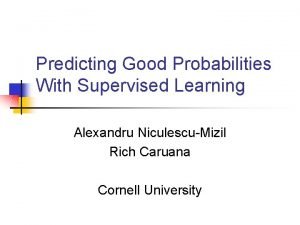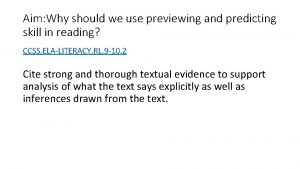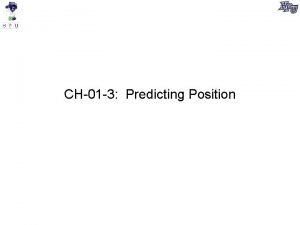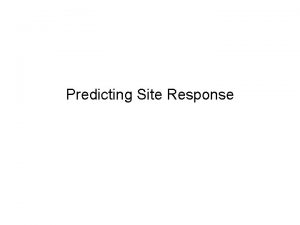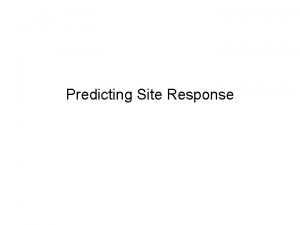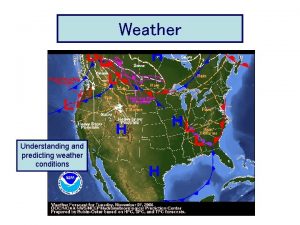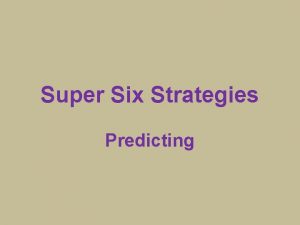Market Impact Analysis Predicting market impact to identify








- Slides: 8

Market Impact Analysis Predicting market impact to identify optimal trading schedules 31 st October 2018 © COPYRIGHT | Delta Capita | CONFIDENTIAL

Project Overview • Train a prediction model to forecast the market impact of a set of historical equity trades. • Use the predictions to find the market impact minimising strategy from a set of existing (mathematically derived) trading strategies for a planned trade of a certain size in a specific instrument at a certain point in time. 2

Market Impact Definition • Market impact describes the movement in the price of the stock caused by a trade or order. • It is the difference between the price trajectory of an instrument with the order and what the price trajectory would have been had the order not been submitted to the market. • Market impact contains a temporary and permanent component. • Since it it is not possible to set up a controlled experiment in which the market impact can be observed in isolation, it cannot be precisely measured. 3

Market Impact Temporary Market Impact • Executing a large trade quickly will incur a liquidity premium. • The market impact of a large market order will manifest itself as a transient imbalance in the limit order book that causes the bidask spread to widen temporarily. • To reduce market impact, an order must be split into successive smaller trades. • The challenge for market participants is to structure an order in a manner that balances the minimisation of market impact with the reduction of exposure risk incurred by holding a position for too long. 4

Optimal Execution Algorithms 5

Framework Manual inputs Instrument Order volume Streamed inputs for the specified instrument Buy or sell Strategy parameters Market volume Order flow imbalance Volatility Bid-ask spread Optimal execution strategies Optimal trading schedules Trained market impact prediction models ML 1 ML 2 … ML N µ predicted MI across ML models Industry 1 Industry 2 Industry 3 µ predicted MI across industry models Generate Proposed strategy 6 Strategy 1 10 bps 6 bps … 3 bps 6 bps 8 bps 3 bps 4 bps 5 bps Strategy 2 4 bps 8 bps … 0 bps 4 bps 8 bps 3 bps 4 bps 5 bps … … … 8 bps 3 bps 4 bps 5 bps Strategy N -3 bps 5 bps … 4 bps 2 bps 8 bps 3 bps 4 bps 5 bps Client strategy 8 bps 4 bps … 12 bps 8 bps 3 bps 4 bps 5 bps Price drift

Future Development Supervised predictive model for partial trades • Technique: sequence-to-sequence RNN (LSTM) • Predicts the potential market impact of different trade options at each time step • Advantages • • • Feature set includes deep order book information at highly frequent intervals Market impact measure will be composed of instantaneous as well as temporary market impact Able to learn the impact of one’s own past trade activity on potential future trades Can incorporate all types of orders and activity as predictive features (e. g. limit orders, order cancellations) Can facilitate a dynamic trading algorithm that reacts to market changes in real time Reinforcement learning model • Can learn underlying market dynamics and adopt trading behaviour based on past “experience” 7

 Predicting products of chemical reactions
Predicting products of chemical reactions Predicting products of chemical reactions
Predicting products of chemical reactions Predicting products synthesis
Predicting products synthesis Predicting good probabilities with supervised learning
Predicting good probabilities with supervised learning Combination reaction equation
Combination reaction equation Braden scale score
Braden scale score Bahasa inggris disusun
Bahasa inggris disusun Braden scale for predicting pressure sore risk
Braden scale for predicting pressure sore risk The aim of previewing is
The aim of previewing is



